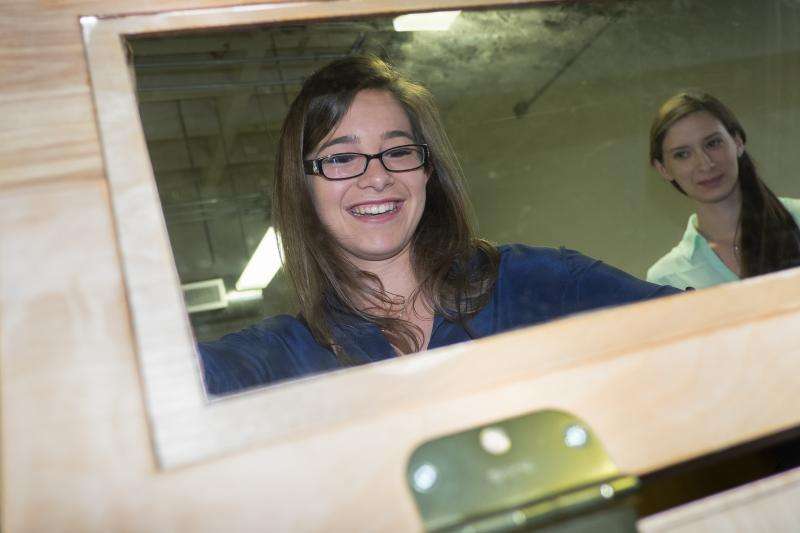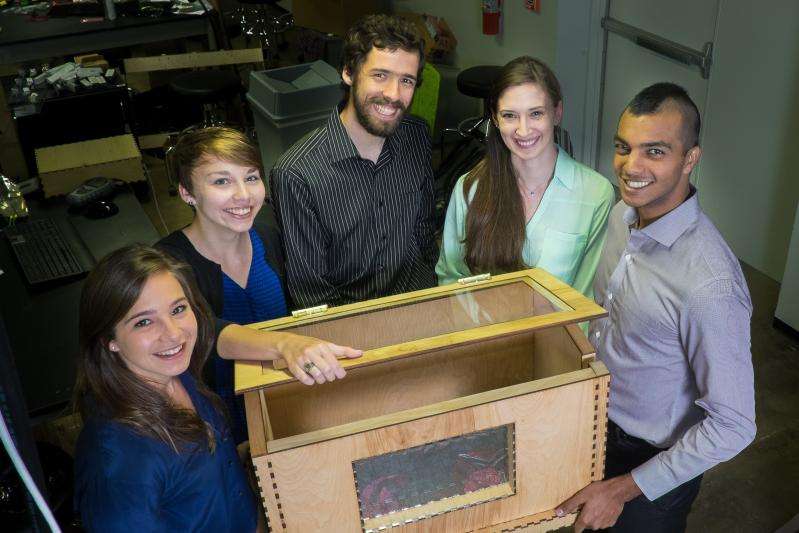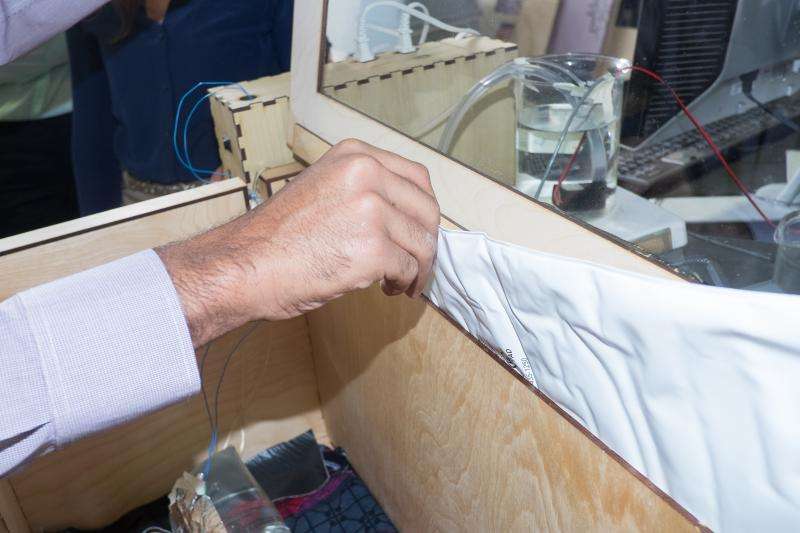Low-cost incubator gently warms hypothermic infants

Rice University students have built a unique incubator for hypothermic infants that can be flat-packed and shipped at minimal cost anywhere in the world.
The lightweight incubator designed and built at Rice's Oshman Engineering Design Kitchen uses a pair of heating pads and a sophisticated configuration of simple materials to keep an infant's body temperature stable.
The IncuBaby team built the incubator as its capstone design project, required of most graduating engineering students at Rice. They expect their final prototype to travel to Queen Elizabeth Central Hospital in Blantyre, Malawi, this summer, where it will be evaluated by staff who work closely with Rice 360˚: Institute for Global Health Technologies.
The project represents what the students hope is the last in a series of incubators intended to give the neonatal wards of hospitals in developing nations much-needed equipment at a reasonable cost. IncuBaby is designed to gently raise the core temperature of an infant experiencing hypothermia, a dangerous condition in which the baby's temperature falls below 36 degrees Celsius (96.8 degrees Fahrenheit).
The team designed the incubator for wards that have a steady supply of power, choosing to focus on keeping an infant's environment appropriate to raise its core temperature. That required electronics to monitor the baby's temperature and control heating pads set into double-wall plywood panels in one wall and the floor.
"There have been a lot of solutions in the past for incubator designs, but they all fell short in one area or another," said bioengineering major Carissa Livingston. "Others haven't necessarily prioritized safety or they focused on short-term solutions you would find outside of a hospital, like warming up some sort of a sleeping bag to keep a baby warm for about three hours.
"We want to focus on creating low-cost but safe incubators and make it suitable for in-hospital settings, so we incorporated temperature feedback to automatically adjust to the temperature of the baby to keep the baby at an optimal, non-hypothermic temperature," she said. "That's something you see in a lot of incubators in the developed world but you don't see it at all in developing countries."
One other difference, she said, is that hospital incubators cost as much as $35,000. Parts for the Rice device cost about $250, and the IncuBaby team hopes to keep its production version between $300 and $400.
Livingston is one of five seniors who have worked on the project since last fall. Joining her are mechanical engineering major Amanda Boone and bioengineering majors Bailey Flynn, Caleb Owsley and Zaid Haque.
The current version, their fourth prototype and the one they will enter into Rice's upcoming Engineering Design Showcase, consists of two boxes: One to hold the baby and one to hold the electronics and readouts. Both are made primarily of laser-cut plywood, with acrylic windows in the top and front and polystyrene foam for insulation in the hollow walls that don't contain heating pads.
The team wrestled with the decision to design the incubator in a way that could be replicated in-country or manufactured elsewhere and shipped. "This box could be easily laser-cut in-country, if they have access to the equipment, but there are other constraints," Boone said. "The acrylic and foam are a lot easier to get in the United States, so we designed it so it could be fabricated here and flat-packed for assembly on-site."

Another consideration was making the incubator big enough for many babies. "Primarily, it's meant for neonates," Flynn said. "Typically, hypothermic neonates would be premature, so they're smaller than a normal baby, but we wanted our box to be able to accommodate infants as well.
"We also have to allow room for the doctor to be able to access the infant, and in case the child has any medical equipment that has to be in the box," she said.
Without access to a baby for testing, the team used an IV bag connected to a beaker on a hot plate to simulate an infant's core temperature. "A lot of the work we've done has been testing," Owsley said. "Our goal is to make something really simple and user-friendly. If you're putting a fragile life in there, you're going to want a lot of validation."

Flynn will remain at Rice this summer to work on the project, which she expects will be taken over by an associate at Rice 360˚ after it returns from Malawi. "There are still aspects that need to be added or tweaked," she said.
"The challenge has been to get it to a place where it works pretty well and there won't be much left to do," Boone said. Features they hope to add before they graduate include a fabric band to secure the temperature probe to the infant and a weaning setting.



















